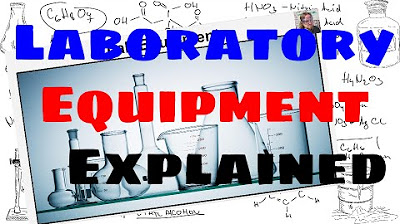Metallic Solids
Summary
TLDRThis chemistry video by Mr. Andersen explores metallic solids, focusing on their unique properties like shininess, conductivity, and malleability. It delves into the electron sea model, which explains how free electrons contribute to metals' characteristics. The script also discusses alloy formation, including interstitial and substitutional alloys, using examples like steel, brass, and white gold to illustrate how different combinations can alter a metal's properties, such as preventing rust in stainless steel.
Takeaways
- 🌟 Metals are valued for their shiny appearance, electrical conductivity, ductility, and malleability, which are due to the electron sea model where electrons are free to move.
- 🔍 Metals can be bent and shaped, as seen with the creation of alloys like electrum, which is a mixture of gold and silver.
- 🛠 Alloys are formed by combining metals, which can be categorized into interstitial alloys, where smaller atoms fill gaps, and substitutional alloys, where atoms are replaced with different ones.
- 🔬 The electron sea model is fundamental to understanding the properties of metallic solids and their alloys, as it explains their shininess, conductivity, and malleability.
- 🌈 Metals can reflect light due to the presence of free electrons on their surface, which is why they appear shiny.
- ⚡ Metals are good conductors of both electricity and heat because of the high number of free electrons available for conduction.
- 💎 Ductility allows metals to be stretched into wires without breaking, showcasing their ability to deform under tension.
- 🔨 Malleability enables metals to be hammered into thin sheets, demonstrating the ease with which they can be shaped.
- 🔩 Alloys like stainless steel are created by adding specific atoms to iron, which changes its properties, such as making it rust-resistant.
- 🧩 Interstitial alloys, exemplified by steel, involve adding smaller atoms like carbon into the gaps within the metal structure to increase density and strength.
- 🔄 Substitutional alloys, such as brass, involve replacing one type of atom with another of similar size, resulting in a material with different properties from the individual metals.
Q & A
What are some of the unique properties of metallic solids?
-Metallic solids have properties such as shininess, good electrical and thermal conductivity, ductility, and malleability, which are attributed to the presence of a 'sea' of free electrons that can move around easily.
Why are metals shiny?
-Metals are shiny because they have free electrons on their surface that absorb some light and reflect a lot of it, giving them a lustrous appearance.
What is the electron sea model in the context of metallic solids?
-The electron sea model describes the behavior of electrons in metals as a 'sea' of free electrons that can move around easily, contributing to the metallic properties such as conductivity and malleability.
What is an alloy and how does it relate to the electron sea model?
-An alloy is a mixture of two or more metals or a metal and another element, which retains the electron sea model properties, allowing it to conduct electricity and heat, and be ductile and malleable.
How can metals be bent to our will?
-Metals can be bent to our will due to their ductility and malleability, which allow them to be stretched or hammered into different shapes without breaking.
What is the difference between interstitial and substitutional alloys?
-Interstitial alloys involve filling the gaps between metal atoms with smaller atoms, like carbon in steel. Substitutional alloys involve replacing one metal atom with another of similar size, such as zinc in brass.
Why can alloys have different chemical properties compared to their constituent metals?
-Alloys can have different chemical properties because the added atoms can alter the electron configuration and interactions within the metal lattice, leading to new characteristics, such as stainless steel's resistance to rust.
What is the role of chromium and nickel in stainless steel?
-Chromium and nickel in stainless steel help to prevent rusting by forming a passive layer that protects the iron from oxygen, thus reducing its interaction with the environment.
How does the electron sea model help in understanding the properties of metals?
-The electron sea model helps in understanding the properties of metals by illustrating how the free movement of electrons contributes to their conductivity, malleability, and ductility.
What is the significance of the ability of metals to form alloys?
-The ability of metals to form alloys is significant because it allows for the creation of materials with specific properties tailored for various applications, such as rust-resistant stainless steel or high-density steel.
How does the electron sea model explain the conductivity of metals?
-The electron sea model explains the conductivity of metals by showing how the free electrons can move easily through the metal lattice, allowing for the flow of electric current.
Outlines

هذا القسم متوفر فقط للمشتركين. يرجى الترقية للوصول إلى هذه الميزة.
قم بالترقية الآنMindmap

هذا القسم متوفر فقط للمشتركين. يرجى الترقية للوصول إلى هذه الميزة.
قم بالترقية الآنKeywords

هذا القسم متوفر فقط للمشتركين. يرجى الترقية للوصول إلى هذه الميزة.
قم بالترقية الآنHighlights

هذا القسم متوفر فقط للمشتركين. يرجى الترقية للوصول إلى هذه الميزة.
قم بالترقية الآنTranscripts

هذا القسم متوفر فقط للمشتركين. يرجى الترقية للوصول إلى هذه الميزة.
قم بالترقية الآنتصفح المزيد من مقاطع الفيديو ذات الصلة

Menentukan Mr ( massa molekul relatif )

Organic Biochemistry Screencast Session 1.mp4

Lab Equipment - Explained

How to Write Chemical Equations

Stoikiometri (1) | Menentukan Ar dan Mr | Kimia Kelas 10

The Nernst Equation Explained | Electrochemistry class 12

Matter (Atoms, Elements, and Compounds) - Explained
5.0 / 5 (0 votes)
